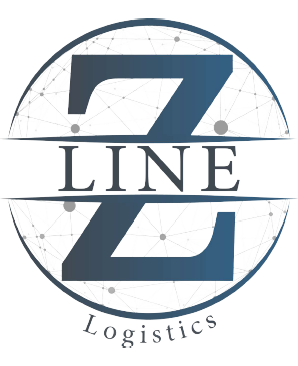Table of Contents
In the time of retail sale there is no alternative of managing the inventory that will be way beaten the path of success.
It is here that the discipline of inventory control that is one of the key components of this management comes in.
In this blog, we bust open the seemingly simple stock checking procedures that become herculean quest, highlighting the necessity, methodologies, and good approaches to empower businesses in taking control of their inventories.
What Are the stock checking procedures?

In the stock checking procedures, which sometimes goes under names like inventory counting or stocktaking, businesses take the standard procedures used to be sure that the items held in inventory only are of the same quantity and condition with recorded data.
The stock checking procedures consist of checking the inventory by hand; it includes counting, inspecting, and reconciling the inventory in order to ascertain its reliability and usefulness in the inventory records.
Here’s an overview of a typical stock checking procedures:
Preparation: It goes without saying that the most thoughtful and most well-prepared stock check will always precede anything else. These will include organizing a stock check at the time of operations when operations are least upsetting for the stock check, having an adequate staff will be necessary, and tools like counting equipment, barcode scanner and the inventory list will be allocated.
Counting Inventory: The direct barcode scanning process of Digital Inventory Management actually entails physically walking on store floors, and having the actual stock-keeping units recorded for each one of the products. The process of inventory taking may not be uniformly done but based on the size or complexity of the inventory which may be conducted manually, with bar-code scanners for speed capturing of data or combined with inventory management software that makes use of automated systems.
For New Info About AI and Transportation!
Verification: If all the items have been counted, you would go further and verify the accuracy of the count. Additionally, the staff checks counts by multiples among themselves, compares counts with store records of purchases and electronic inventories and investigates where necessary and whenever discrepancies or inconsistencies have been spotted.
Recording: Inventory and count ratification details need to be precisely recorded in case there is a need for verification and reference. Besides this, such a process also entails big data collection and using the full-range of the selection of inventory management software / system. In this process, every square centimeter of the storerooms gets counted, the record is updated, and a report is generated on inventory variance that has been produced over time.
Analysis and Action: Following the inventory check is the process of analyzing the results and taking the proper corrective action based on the accounting entries or the stock discrepancies. This could involve uncovering the causes of the total absence, correction of the inventory records in order to learn the correct stock values, and all the improvements in the processes, which result in prevention of the next error or deviation from the established flow.
Documentation and Reporting: Then make sure to note down the expected action to be taken till the end of this procedure that involves the dates and time of check, the individuals that will be involved, and any possible observation or issues. Secondly, check stock results along with any actions taken by mine management, finance and operations teams should also be distributed to stakeholders concerned.
Overly, quality stock checking procedures are a major component of a proper management of stock, minimization of inventory shortages and efficiency of inventory management in a business. It conveys critical information that pertains to stock levels providing clues on potential issues that may be on rise and also facilitates making appropriate decisions about buying, selling, or operational planning.
Read More: Freight Forwarding and Customs Compliance
What are the benefits of the stock checking procedures?

Stock checking procedures provide value to most types of businesses belonging to the manufacturing, retail, service, or other industry sectors. Here are some of the key advantages of stock checking procedures:
Accuracy in Inventory Records: By performing stock checking procedures, the amount of items and quality of those items listed in stock management systems should be in agreement with their actual location in shops. This accuracy Lowers mistakes and inaccuracies at records of inventory which build more trustable data for the purpose of decision making.
Prevention of Stock outs and Overstocking: One key stock management aspect is when businesses keep track of and reconcile stock levels based on stock checking procedures. This method prevents two major problems: stock outs (when inventory is exhausted) and overstocking (when extra products are left in the storeroom). Therefore, there would be uninterrupted flow of goods until the products are ready to meet the customer demand while decreasing inventory carrying expenses.
Cost Control: With precise stock records because of stock taking processes, enterprises can meet the goals of inventory optimization and efficient use of storage space. By this way one always can cut the storage costs, minimize the risk of outdated data, and do the other things that one can do instead of using the excess capital for the same reason.
Improved Customer Service: Stock taking jobs via stock checking procedures ensures businesses to be synchronized with gigantic flow of orders and provide customers with order fulfillment precisely and timely. Aiming at increasing customer satisfaction level, this will ensure that products are available as earlier possible with the low possibilities of problems like backorders or delays.
Detection of Theft or Loss: Performing regular stock checking procedures is important, as one of the purposes of such checks is to monitor whether the recorded numbers match to the counted goods, which become an indicator of theft/shrinkage/other losses/various incidents. A stepwise approach should be taken to easily identify and quickly deal with these problematic areas in order to avoid losses and avoid cases of future mishaps.
Know More: Sustainable Local Sourcing in Dubai for a Thriving Economy in 2024
Compliance with Regulations: In some industries it is a necessity to comply with regulation which comes with rules of exact tracking and reporting. Proof of the stock checking procedures, it is considered that this very thing helps businesses to stay in touch with these regulations through veracity inventory records and documentation of inventory management practices.
Operational Efficiency: Having the stock checking procedures in place enables the company to improve processes, discover the problems, and possibly the development plans. Through practicing optimization of stock control, businesses will be able to achieve better recentralization, will eliminate waste and thus, enhance productivity.
Facilitation of Financial Reporting: Correct inventory reports as a result of stock checking procedures are essential for the detailing of the financials. This refers to the delivery of dependable data on stock levels and net worth, enabling companies to come up with sound financial statements that are compliant with the accounting regulations and standards.
Read This Article: Mass vs Tailored Logistics: Which is Better?
FAQs
What is the stock inspection process?
Inspecting stock is a well-thought-out method of validating the number, quality and state of items that are preserved for inventory. The process consists in checking and recording the exact stock level of products or materials. It ensures the equality between on-hand information and inventory records or helps locate abnormalities or problems that the record contains.
How to do a stock inspection?
Stock exam election is usually done by following these steps: first, checking in detail, and then accuracy.This process may involve:
The precaution measures in this area include the planning and preparation, which involve making arrangements (for example, selection of counting devices, barcode scanners and other necessary tools), and organizing the inventory section.
Algorithmically or manually tracking stock quantities and keeping a tab on these numbers in the inventory.
Checking the accuracy of tallying through methods like duplicate counting, comparing recorded information with the inventory, and investigation of any possible discrepancies.
Preparing all the necessary inspection reports on observations, deviations, or any issues that were observed during the entire inspection.
Discussing results and what strategies must be taken by each manager according to the outcome, e.g. correcting inventory files, reviewing reasons of the counts deviation, and improving process.
What are the steps of the inspection process?
The steps of the inspection process typically include:
Planning and preparation: The Workspace inspection did require some preparatory work, such as: scheduling the inspection, gathering necessary equipment, and organizing the inventory area.
Counting and recording: Manually carrying and noting the number of each item per inventory and then doing an addition or subtraction of the obtained quantity.
Verification: The manual recording involves challenging operations such as making a strict comparison to inventory records, identifying the reasons for any discrepancies.
Documentation: Recording inspection results, notes about the different results observed, and details about the steps taken to correct an issue.
Analysis and action: Reviewing outcomes, identifying anomalies and tolerance limits, and enhancing the processes to be efficient.
How is inspection done on a warehouse?
Inspection of a Storage Facility is the procedure where all storage spaces are checked; adequately, to ensure that all types of storage space namely ledges, carts, and bins have been examined.The process may include:
Physical directory of the inventoried items.
This includes assessing the product quality and state, i.e. uncovering defects, unfit expiry dates, or signs of deterioration.
The verification by which stocks balance with recorded statistics in stocktake systems.
Inspecting for the presence of any safety hazards, including tripping obstructions, ladder or stairway spills, or damaged equipment.
Examining the inspection reports about the detecting of all problems found and also mechanical actions performed by the authorized agency which aim at elimination of these issues.
In the end, stock checking processes require the most profound attention because they not only affect business success but they also influence the country’s business sustainability as a whole.
After all, organizations need to account for all the goods in the inventory, while ensuring that the stocks are both reliable and accurate as they are vulnerable to risks.
Also, customers demand for goods, sales logs, inventory turnover, and stock replenishment practices are being improved for businesses to stay competitive in the current dynamic marketplace.
Implementing the accuracy, inquisitiveness, and innovation inherent in the stock check, the business can exploit this tool to boost inventory management practices, broaden growth avenues, and achieve lasting success in a dynamically changing business space.




